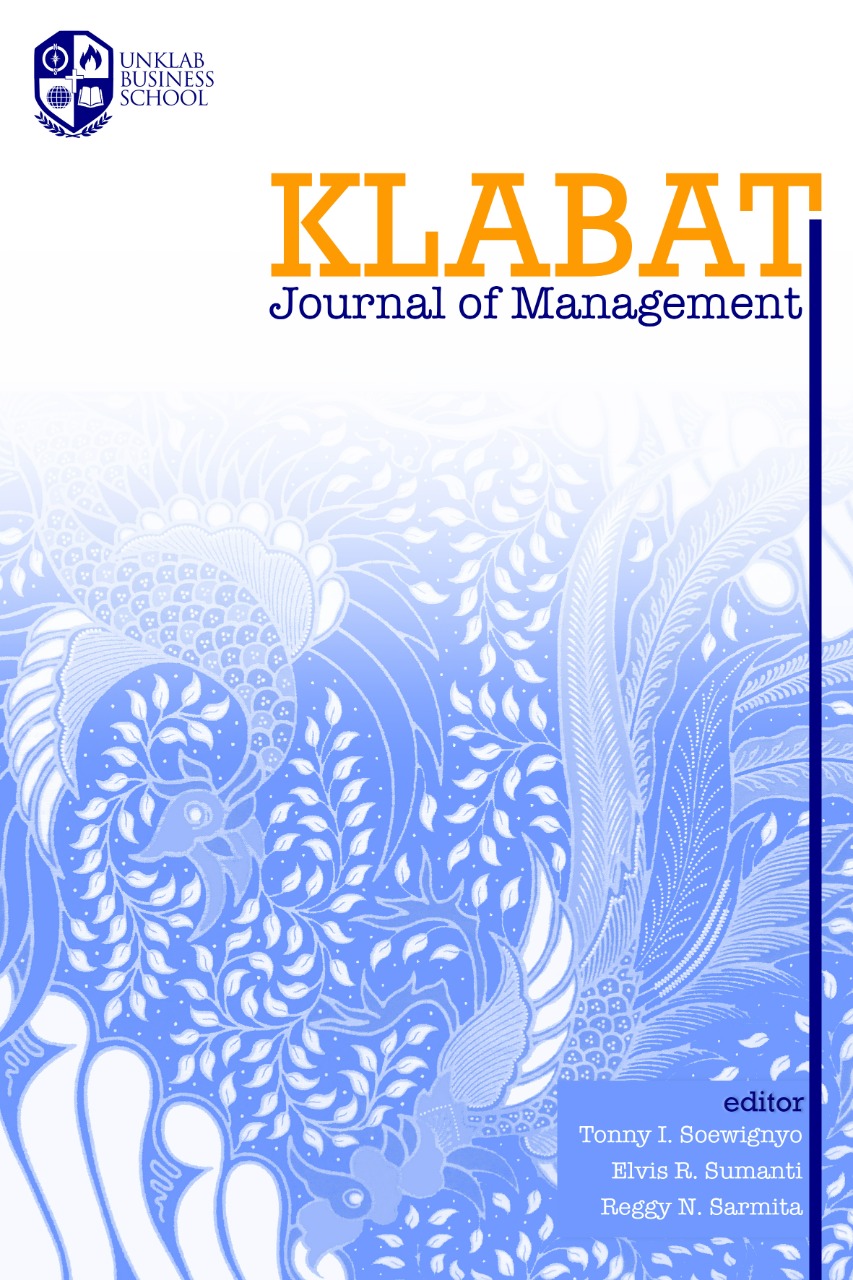SHORT VIDEO APPLICATION USAGE AND FLOW EFFECT ON IMPULSE BUY
DOI:
https://doi.org/10.60090/kjm.v4i2.1027.163-172Keywords:
MSA usage, SOR model, flow, impulse buyAbstract
Mobile Short Video Applications (MSA), offering short video content and often including referral and commercial features, have attracted a substantial user base, appealing to marketers. However, previous research has not specifically focused on how the use of MSA can influence impulsive buying. Therefore, this research aims to fill this gap by integrating the concept of flow (intense engagement with an activity) into the Stimulus-Organism-Response (SOR) Model. In this context, the utilization of MSA serves as the Stimulus, while flow is divided into enjoyment, concentration, and time distortion, acting as the Organism. The observed Response is impulsive buying. A survey-based questionnaire research method was employed, with a sample of 190 university students. Structural equation modeling (SEM) techniques were used to examine the relationships among the constructs, complemented by qualitative analysis. The research findings indicate that the use of MSA significantly influences the experience of flow, which, in turn, affects impulsive purchasing behavior. Flow (enjoyment) exerts the strongest influence on impulsive buying (0.459 correlation), compared to concentration (0.204) and time distortion (0.212). Enjoyment also mediates the relationship between MSA usage and impulsive purchasing. Users tended to engage in spontaneous and unplanned impulsive purchases when they were in a heightened state of flow, predominantly triggered by enjoyment while using MSA, as opposed to concentration or time distortion. The testing model is valid and reliable within a statistical confidence level exceeding 90%, explaining 29.5% of the variance in impulse buying.
Keywords: MSA usage, SOR model, flow, impulse buy
References
Barta, S., Gurrea, R., & Flavián, C. (2022). The role of flow consciousness in consumer regret. Internet Research, 32(3), 875–896. https://doi.org/10.1108/INTR-08-2020-0482
Bozaci, I. (2020). The effect of boredom proneness on smartphone addiction and impulse purchasing: A field study with young consumers in Turkey. Journal of Asian Finance, Economics and Business, 7(7), 509–517. https://doi.org/10.13106/jafeb.2020.vol7.no7.509
Chan, T. K. H., Cheung, C. M. K., & Lee, Z. W. Y. (2017). The state of online impulse-buying research: A literature analysis. Information and Management, 54(2), 204–217. https://doi.org/10.1016/j.im.2016.06.001
Creswell, J. W. (2014). Research Design, Qualitative, Quantitative, and Mixed Methods Approaches (4th ed.). Sage Publishing.
Deng, X., & Yu, Z. (2023). An extended hedonic motivation adoption model of TikTok in higher education. Education and Information Technologies, 28(10), 13595–13617. https://doi.org/10.1007/s10639-023-11749-x
Disdukcapil. (2023). Jumlah Penduduk Kota Pontianak 2023. https://disdukcapil.pontianak.go.id/download/jumlah-penduduk-semester-i-tahun-2023
Hair, J., Hult, G. T. M., Ringle, C. M., Sarstedt, M., & Thiele, K. O. (2017). Mirror, mirror on the wall: a comparative evaluation of composite-based structural equation modeling methods. Journal of the Academy of Marketing Science, 45(5), 616–632. https://doi.org/10.1007/s11747-017-0517-x
Hair, J., F., Matthews, L. M., Matthews, R. L., & Sarstedt, M. (2017). PLS-SEM or CB-SEM: updated guidelines on which method to use. International Journal of Multivariate Data Analysis, 1(2), 107. https://doi.org/10.1504/ijmda.2017.10008574
Hair, J., F., Hult, G. T., Ringle, C., & Sarstedt, M. (2017). A Primer on Partial Least Squares Structural Equation Modeling (PLS-SEM) - Joseph F. Hair, Jr., G. Tomas M. Hult, Christian Ringle, Marko Sarstedt. In Sage.
Huang, Q., Hu, M., & Chen, H. (2022). Exploring stress and problematic use of short-form video applications among middle-aged chinese adults: The mediating roles of duration of use and flow experience. International Journal of Environmental Research and Public Health, 19(1). https://doi.org/10.3390/ijerph19010132
Iyer, G. R., Blut, M., Xiao, S. H., & Grewal, D. (2020). Impulse buying : a meta-analytic review. Journal of the Academy of Marketing Science, 48, 384–404.
Le, T. Q., Wu, W. Y., Liao, Y. K., & Phung, T. T. T. (2022). The Extended S-O-R Model Investigating Consumer Impulse Buying Behavior in Online Shopping: A Meta-Analysis. Journal of Distribution Science, 20(2), 1–9. https://doi.org/10.15722/jds.20.02.202202.1
Liu, Y., Gao, Q., & Ma, L. (2021). Taking Micro-breaks at Work: Effects ofWatching Funny Short-Form Videos on Subjective Experience, Physiological Stress, and Task Performance. In 13th HCI International Conference 2021: Vol. LNCS 12772.
Mason, M. C., Zamparo, G., Marini, A., & Ameen, N. (2022). Glued to your phone? Generation Z’s smartphone addiction and online compulsive buying. Computers in Human Behavior, 136(July), 107404. https://doi.org/10.1016/j.chb.2022.107404
Matthews, M. (2018). PLS-SEM: The Holy Grail for Advanced Analysis. Marketing Management Journal, 28(1), 1–13.
Norman, G. (2010). Likert scales, levels of measurement and the “laws” of statistics. Advances in Health Science Education, 15, 625–632. https://doi.org/10.1007/s10459-010-9222-y
Panda, S., & Pandey, S. C. (2017). Binge watching and college students: motivations and outcomes. Young Consumers, 18(4), 425–438. https://doi.org/10.1108/YC-07-2017-00707
Qin, Y., Omar, B., & Musetti, A. (2022). The addiction behavior of short-form video app TikTok: The information quality and system quality perspective. Frontiers in Psychology, 13(September). https://doi.org/10.3389/fpsyg.2022.932805
Rea, L. M., & Parker, R. A. (2014). Designing and conducting survey research : a comprehensive guide. Wiley.
Redine, A., Deshpande, S., Jebarajakirthy, C., & Surachartkumtonkun, J. (2023). Impulse buying: A systematic literature review and future research directions. International Journal of Consumer Studies, 47(1), 3–41. https://doi.org/10.1111/ijcs.12862
Ringle, C. M., Da Silva, D., & Bido, D. D. S. (2014). Structural Equation Modeling with the Smartpls. Revista Brasileira de Marketing, 13(02), 56–73. https://doi.org/10.5585/remark.v13i2.2717
Sekaran, U., & Bougie, R. (2016). Research Methods for Business (7th ed.). Wiley.
Shahpasandi, F., Zarei, A., & Nikabadi, M. S. (2020). Consumers’ Impulse Buying Behavior on Instagram: Examining the Influence of Flow Experiences and Hedonic Browsing on Impulse Buying. Journal of Internet Commerce, 19(4), 437–465. https://doi.org/10.1080/15332861.2020.1816324
Statista. (2023). Countries with the largest TikTok audience as of July 2023. https://www.statista.com/statistics/1299807/number-of-monthly-unique-tiktok-users/
Turban, E., Strauss, J., & Lai, L. (2016). Social Commerce Marketing, Technology and Management. In Springer.
Zhao, H., & Wagner, C. (2023). How TikTok leads users to flow experience: investigating the effects of technology affordances with user experience level and video length as moderators. Internet Research, 33(2), 820–849. https://doi.org/10.1108/INTR-08-2021-0595







